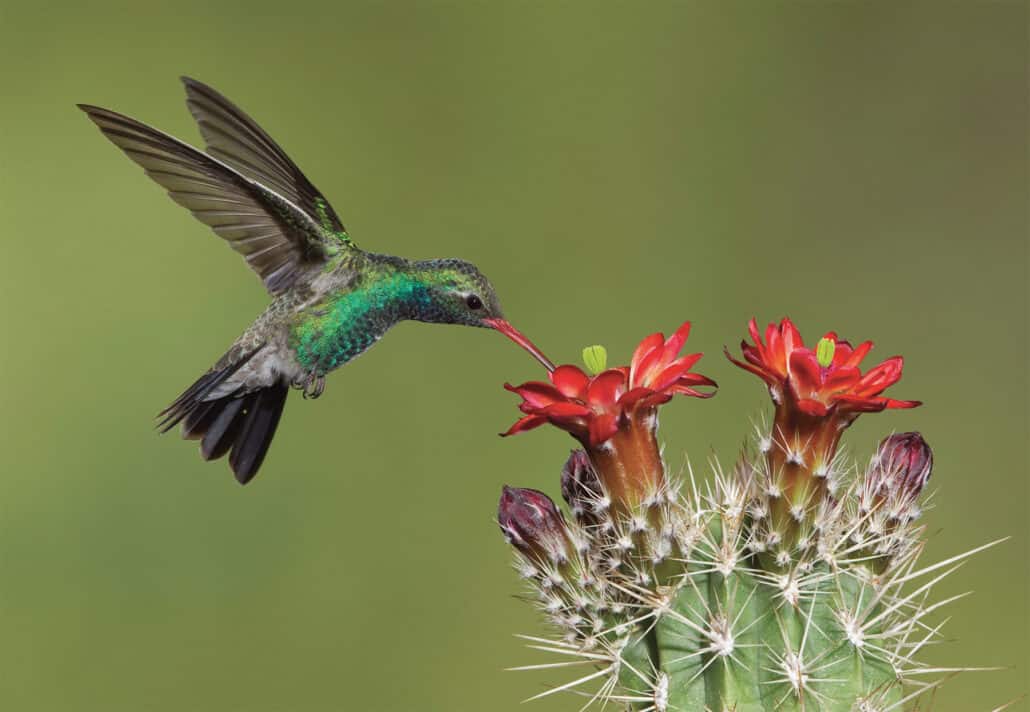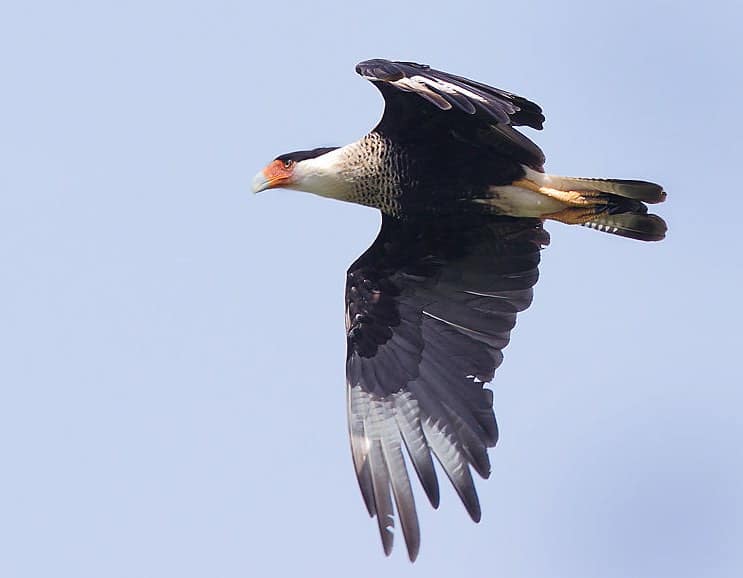Hummingbirds are fascinating creatures and one of the most popular subjects for hard-core listers and backyard bird watchers alike. For those hummingbird enthusiasts that wish to see the greatest variety of species, as well as large numbers of individuals, a visit to southeastern Arizona is a must.
Each year, about 17 species of hummingbirds are reported in the entire United States. In this corner of Arizona, bird watchers can reliably see 12 species in a 3 to 4 day trip and up to 15 species in exceptional years. There are some locations in this area that have recorded 14 species of hummingbirds in a single day!
Whether you are trying to see as many species as possible or are targeting certain species, you must consider the time of year for your visit to maximize your success. Some hummingbird species are present year-round, others only during the breeding season, and a few species pass through the area during migration.
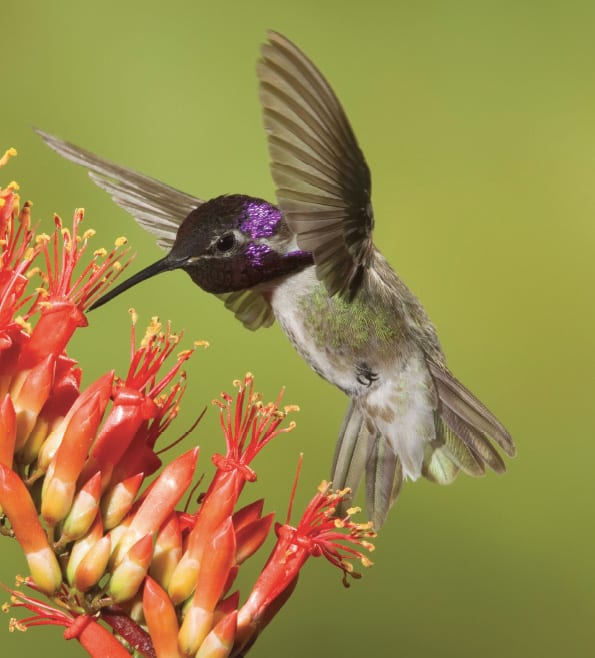
Tucson is the usual starting point for most visitors that travel by air and for those that drive from farther west. The primary target in Tucson should be Costa’s hummingbird, the hummingbird of the desert. The breeding range of this species does not extend much east of Tucson. It is an early nester, usually February through April, and can be seen at flowers and feeders in the area in winter through spring. But after April, when the desert heats up and the natural nectar sources dry up, most of the Costa’s hummingbirds move to the cooler mountains and coastal areas. Some can be found year-round in the Tucson area at feeders and gardens. The most reliable place to see them year-round is the Arizona-Sonora Desert Museum. A few Costa’s hummingbirds are reported in summer and fall in the areas yet to be described, but it is sporadic and unreliable. Your best chance to see Costa’s hummingbird is in the Tucson area.
The common mountain hummingbirds can be seen easily from March to September at all of the locations covered here. These include Anna’s, black-chinned, broad-billed, broad-tailed, and magnificent hummingbirds. Your selection of locations to visit should be based on the rare and localized species that you wish to see.
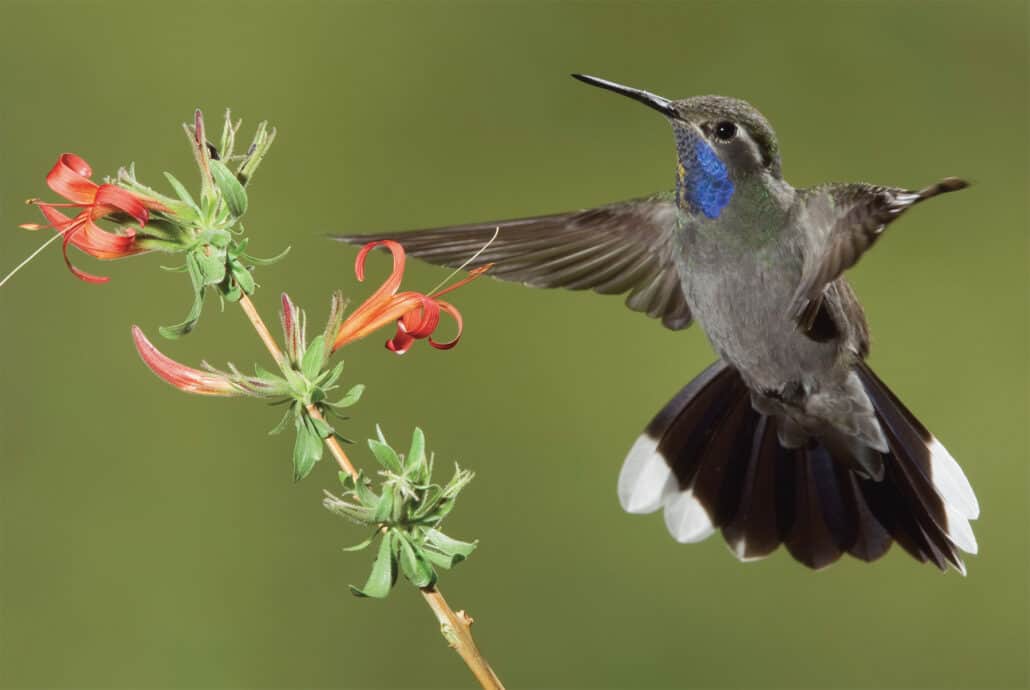
About an hour drive south of Tucson, in the Santa Rita Mountains, is Madera Canyon, one of the most popular birding spots in Arizona. There are three hummingbird feeding stations in the canyon, at the Santa Rita Lodge, Madera Kubo B&B, and Chuparosa Inn B&B. Besides the previously mentioned common mountain hummingbirds, another mountain species, blue-throated hummingbird, can sometimes be seen at these feeders as well. An even more rare species, the white-eared hummingbird, has been reported intermittently at these feeders in the past couple of years. Keep an eye out for berylline hummingbirds, too. They have been reported here, but not in the past few years.
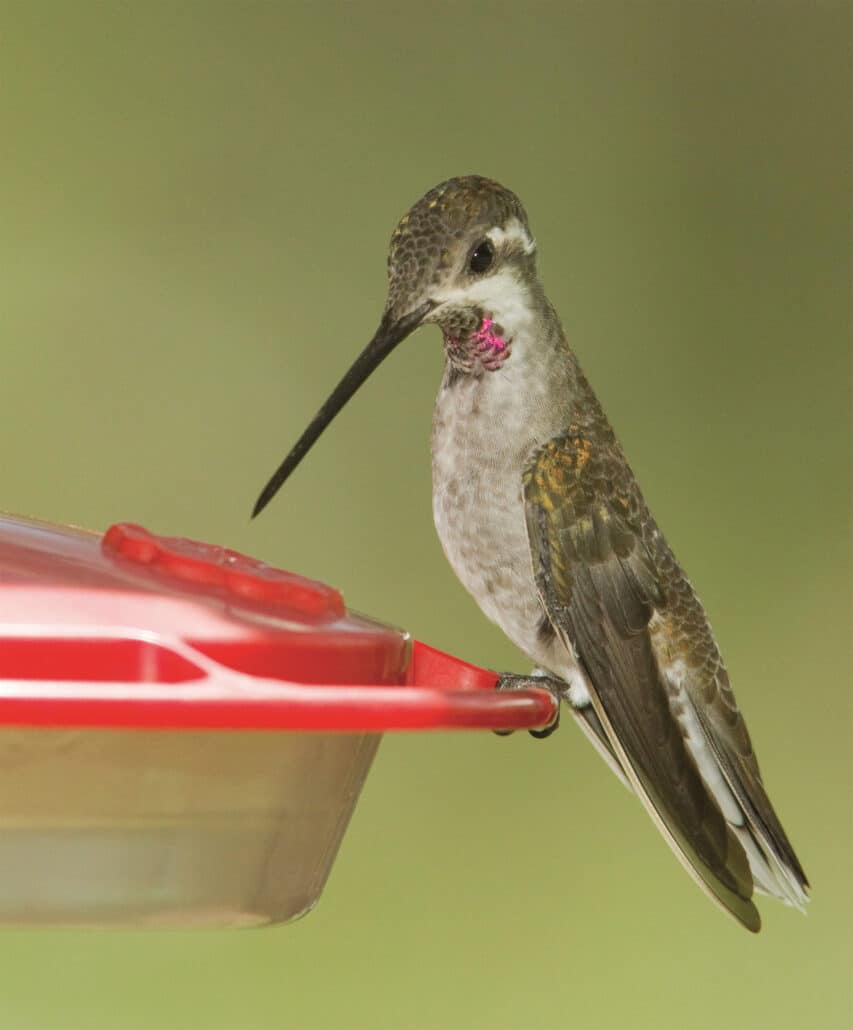
Plain-capped starthroat has historically been a very rare hummingbird in the United States, with most years having no reported sightings. However, for about the past five years there have been reports of several individuals in the Madera Canyon area each year. Plain-capped starthroats wander into this area following their breeding season in Mexico. They occur in this area primarily from June to September. For the past few years, the Santa Rita Lodge feeders have had a starthroat visit for much of the summer. Local birders are hopeful that it will continue to return in the future.
Southeast of the Santa Rita Mountains is the small town of Patagonia. This is a must-stop for hummingbird enthusiasts because it is the most reliable place to see the violet-crowned hummingbird, a strikingly beautiful bird. It is usually present year-round. For many years, Patagonia residents Marion and Wally Paton graciously opened their yard to birders. After their passing, Tucson Audubon Society acquired their property to continue their legacy. It is now called Tucson Audubon’s Paton Center for Hummingbirds. A live webcam is set up at one of the hummingbird feeders and the video stream can be viewed on the Tucson Audubon website.
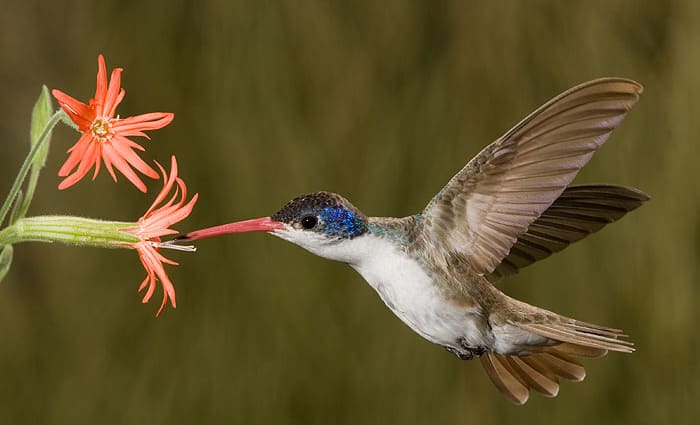
The Huachuca Mountains, which regularly have the greatest diversity of hummingbirds in southeastern Arizona, lie an hour’s drive east of Patagonia. Most of the birding occurs on the east side of the range, south of the city of Sierra Vista. There are many canyons in the Huachucas of interest to birders in general, but three are of special interest to hummingbird enthusiasts.
Six miles south of Sierra Vista is the road to Ramsey Canyon. At the end of the paved road is The Nature Conservancy’s Ramsey Canyon Preserve. Blue-throated hummingbird can often be seen at the feeders around the visitor center in addition to the usual mountain hummingbirds. Berylline hummingbirds formerly nested each year in the sycamore trees around the visitor center, but since the hard freeze of February 2011, they have not been reported. They are likely to return sometime in the future.
A few miles south of Ramsey Canyon is Miller Canyon. This is the most reliable place to see the white-eared hummingbird. At the end of the two-mile dirt road up Miller Canyon are a national forest trailhead parking lot and the entrance to Beatty’s Guest Ranch. White-eared hummingbirds usually come to the feeders at Beatty’s Guest Ranch, but they have not been as reliable since the freeze and forest fire of 2011.
The preferred habitat of the white-eared hummingbird is farther up the canyon, and in the past I have often seen them feeding at flowers about a one-mile hike from the parking lot. Wear something bright red or orange to attract them. I have frequently had one investigate my red-capped water bottle while I was eating lunch in the canyon. I have also found nests in this area. White-eared hummingbirds arrive later than most nesting species and can be seen from early May to early September.

Ash Canyon is located about four miles south of the entrance to Miller Canyon and is the most reliable place to see Lucifer hummingbirds. They visit the hummingbird feeders at Ash Canyon B&B, hosted by the very knowledgeable and gracious Mary Jo Ballator. They nest in the canyon and can usually be seen from April to September. This is an exceptional location for hummingbirds. Through the years, 15 species have been recorded, not counting a plain-capped starthroat that has spent the summers from 2011 to 2015 at a private residence elsewhere in Ash Canyon.
The last stop on this tour is in the scenic Chiricahua Mountains, about a two-hour drive from the Huachuca Mountains, almost to the New Mexico border. If you are driving into Arizona from the east, then this should be the first stop on your tour. Cave Creek Canyon, near the small town of Portal, is the best place to see blue-throated hummingbirds. It is the dominant hummingbird in the canyon. The feeders at Cave Creek Ranch, a guesthouse complex, are an excellent place to see it, along with all of the other mountain hummingbirds. The feeders at the Southwestern Research Station, about three miles farther up the canyon, are another good place to view the hummingbirds in this area.
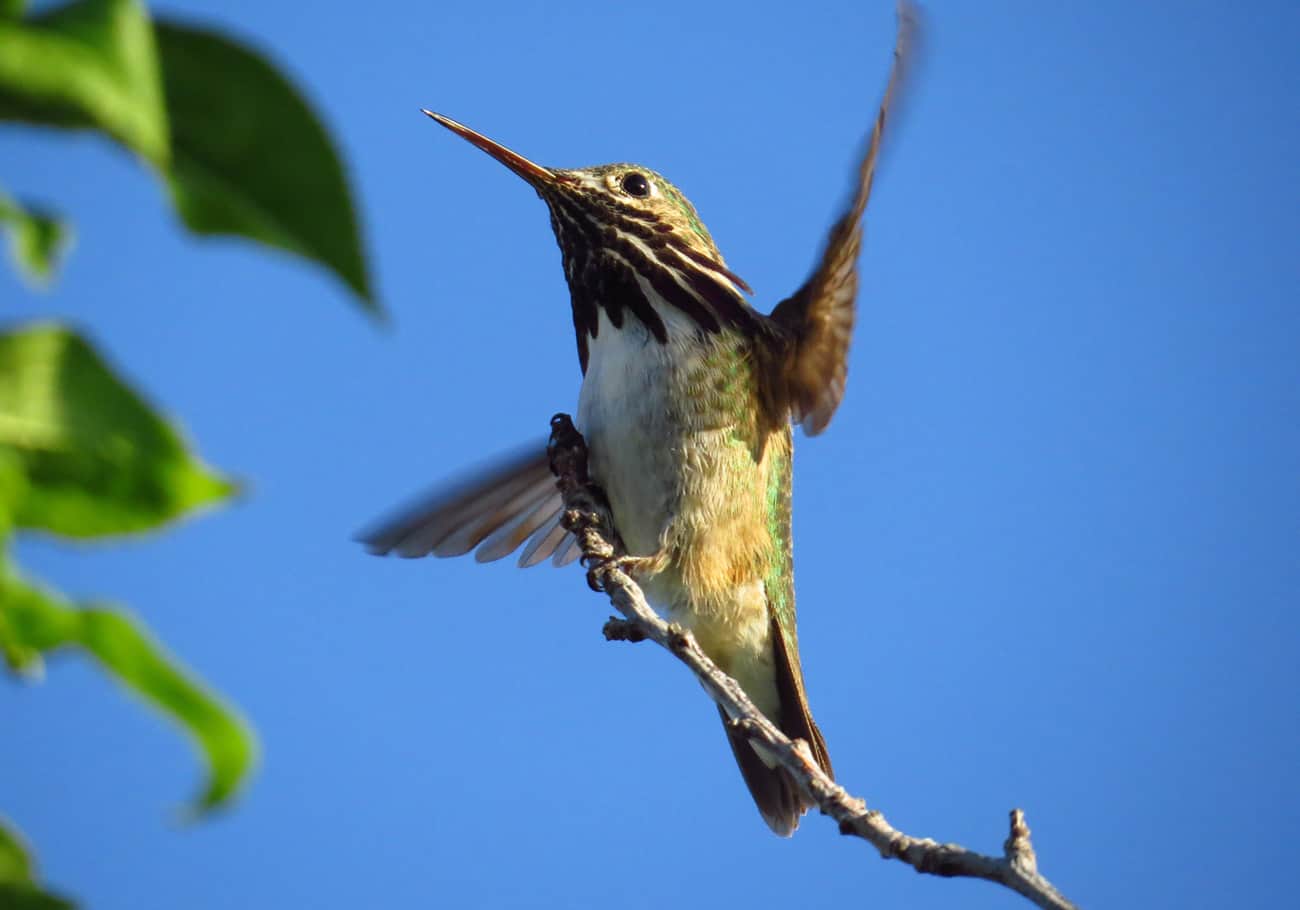
Three species of hummingbirds are considered migrants through this area and can be seen at all of these locations to varying degrees. Rufous hummingbirds are considered uncommon in spring, mainly March and April, and common from late July to September. Males typically migrate earlier than females and immatures, but there is much overlap. By mid-August, however, most of the adult males have already passed through.
Calliope hummingbird is a rare spring migrant and an uncommon summer migrant, mainly August to September. Due to their small size, calliope hummingbirds are often chased away from the feeders by other hummingbirds. Look for them feeding at flowers near the feeders.
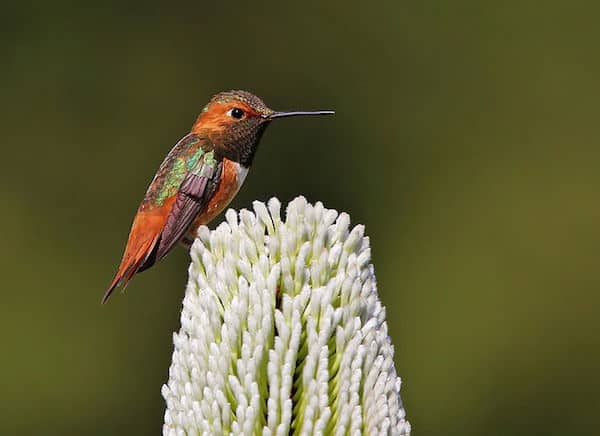
Adult male Allen’s hummingbirds are considered rare in southeastern Arizona. Hummingbird banding evidence indicates that a small proportion (about three to five percent) of female and immature “rufous” hummingbirds migrating through the area during the summer are actually Allen’s hummingbirds. It is very difficult, if not impossible, to distinguish female and immature Allen’s from Rufous hummingbirds, so they go unreported. Due to the difficulty of separating the females and immatures of these two species, they are often referred to as Rufous-Allen’s.
If you are interested in seeing large numbers of hummingbirds as well as a variety of species, the populations in southeastern Arizona peak in early to mid-August. This period coincides with two birding festivals in the area. Southwest Wings Birding and Nature Festival is held the first week of August in Sierra Vista, and Southeast Arizona Birding Festival occurs two weeks later in Tucson. Both festivals offer field trips to the most popular birding locations in southeastern Arizona.
Each of the locations described in this article either accept donations to help maintain the feeding stations or require a nominal entrance fee. Please be aware of the rules of conduct and respect the wishes of the landowners.
Rarities can pop up anywhere in southeastern Arizona and at any time. Resources such as eBird and the Arizona–New Mexico Birding Listserv can provide the most up-to-date information on birding in the area. The Arizona–New Mexico Birding Listserv includes a weekly rare bird alert for the area and updates on any changes in visitation at any locations as well as changes in road conditions. Two useful books on the most popular birding destinations in southeast Arizona are A Birder’s Guide To Southeastern Arizona by Richard Cachor Taylor and Tucson Audubon’s Finding Birds in Southeast Arizona.
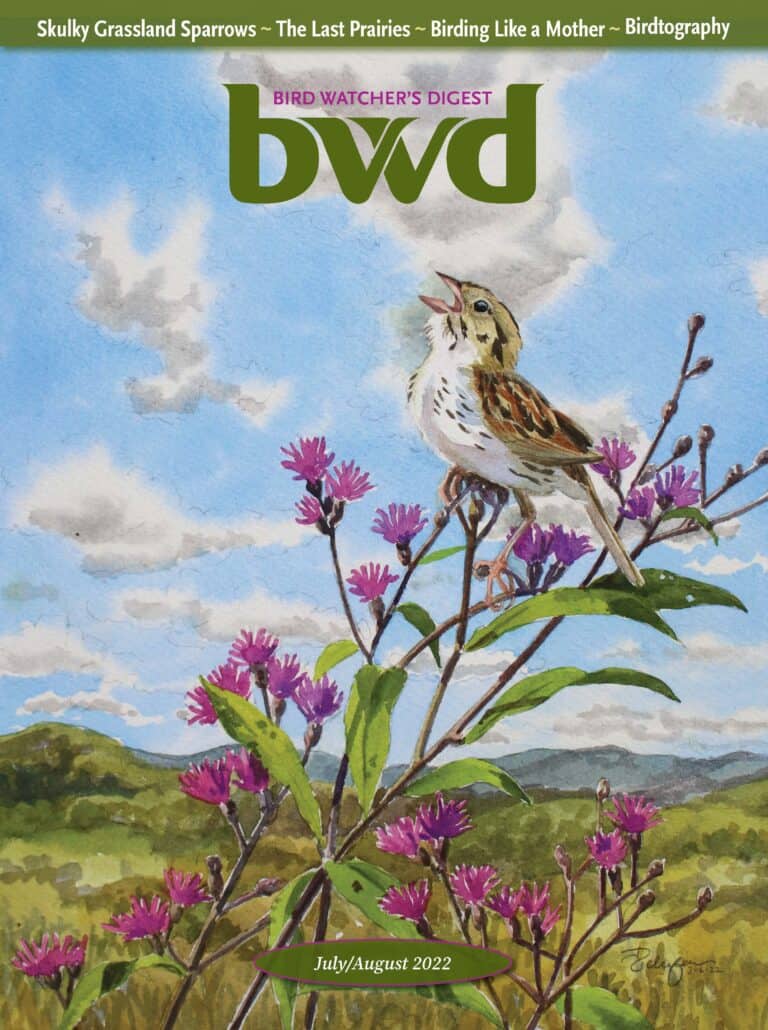
Looking to Subscribe?
Get 6 print issues of the magazine delivered to your door & free digital access
One Year Print Subscription: $26
(to US or Canada, includes digital access)
One Year Digital-only Subscription: $15

